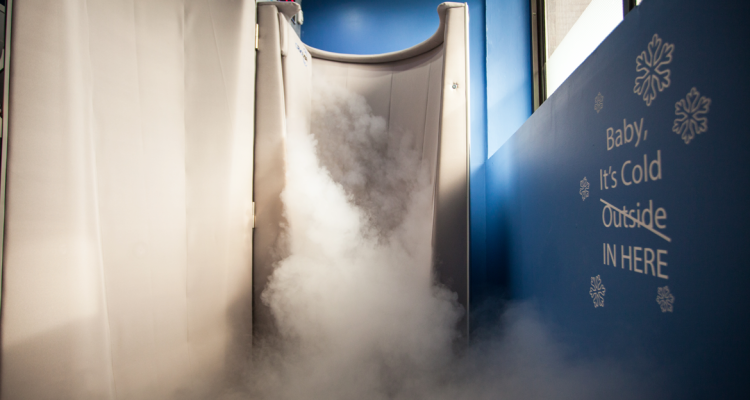Does the thought of willingly standing half-naked in a small, enclosed chamber set to a temperature of minus 200 degrees Fahrenheit make your blood run cold? Ours, too. Perhaps that’s because that’s what literally happens to your body during a Whole-Body Cryotherapy (WBC) session — an extreme dry cooling treatment that has become a health trend among athletes and celebrities like LeBron James and Demi Moore. The main benefits claims? Reducing post-workout muscle soreness and inflammation, improving overall athletic performance, and helping with anti-aging.
Though cold therapy — from simply icing an injury to more complex surgical post-op treatments — is nothing new, the growing popularity of using WBC for non-medical reasons is. So, how does it work? First, you step into a “cryosauna,” a small chamber originally developed to treat various medical conditions, which is filled with liquid nitrogen cooled to a bone-jarring -260 degrees Fahrenheit. Dressed in nothing but socks, mittens, and undergarments, cryo clients stand in the capsule-like machine for two to three minutes while their[Tweet “skin temperature drops to 32 degrees.”] After stepping out, they are then encouraged to do several minutes of light cardio to warm back up and get their blood circulating again.
Cryotherapy is said to treat sore muscles and inflammation in the same way an ice bath would. When the body is exposed to frigid temperatures, it goes into “survival mode,” causing blood to flow to vital organs to deliver more oxygen. Upon exiting the cryosauna, this newly oxygenated blood floods the rest of the body and, in theory, can help reduce inflammation responsible for post-workout soreness.
Some experts say that this frigid treatment isn’t any more effective than sitting in a pool of ice water. But it is faster and less messy, which is certainly beneficial. However, neither ice baths nor cryotherapy have been scientifically proven to ease muscle soreness. Many studies on the subject have been inconclusive, and others indicate the practice has no effect on the alleviation of muscle soreness or post-workout muscle damage whatsoever.
Despite what the journals say, cryo fans still report feeling better after just one session in the polar chamber. Placebo effect? Possibly. Or it may just be that the treatment is indeed effective, despite inconclusive findings.
Until we know more, the most tried-and-true way to lessen post-workout muscle pain is to reduce the intensity of your workouts for a day or two, or only exercise parts of your body that aren’t sore, so that tired muscles can repair themselves and become stronger than before.
However, if you’re the brave, “I’ll do anything once” type of athlete who loves giving alternative treatments a whirl (or you’re really curious what Antarctic weather feels like), then cryotherapy may be just your kind of cool. (Need a SWFL location to try it out? Head to the newly opened USCryotherapy in The Shoppes of Vanderbilt.)
Looking for other recovery tips? Read on…
Sensory Deprivation for Amazing Recovery

